Cone crushers play a pivotal role in the mining, aggregate, and construction industries, where they are used to crush and reduce materials like rocks, ores, and aggregates into smaller, more manageable sizes. At the heart of every cone crusher is the liner, a critical component that directly influences the efficiency, durability, and overall performance of the machine. Selecting the right cone crusher liner is not only crucial for achieving desired production goals but also for extending the lifespan of the equipment and reducing operational costs. In this article, we will explore the different types of cone crusher liners, key factors to consider when selecting them, and tips for optimizing their performance.
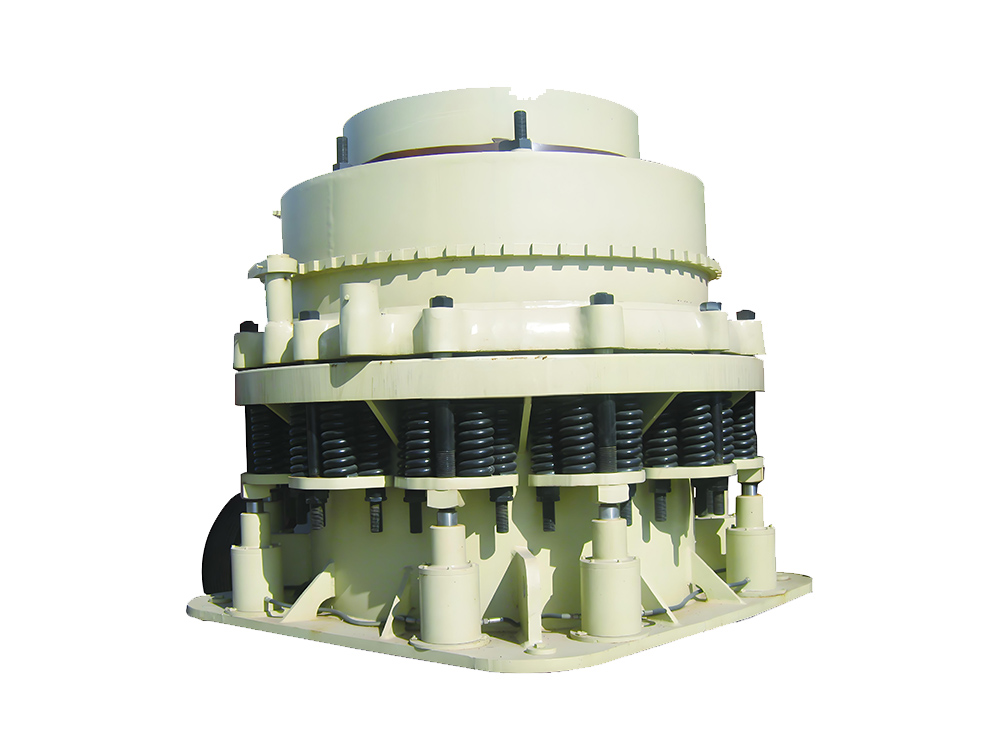
Cone crusher liners are available in various designs and materials, each suitable for different applications and crushing stages. The material, shape and type of the liner directly affect the performance and service life of the equipment. According to the different materials, shapes and functions, cone crusher liners can be divided into the following types:
High manganese steel liner:
High manganese steel liner is the most commonly used type, with good wear resistance and impact resistance. High manganese steel can produce a certain hardening layer after being impacted, thereby increasing the service life. The common material is steel with 12-14% manganese content, which is suitable for crushing medium hardness materials.
High chromium cast iron liner:
High chromium cast iron liner has good wear resistance, but is relatively brittle. It is suitable for crushing materials with higher hardness and has a longer service life. High chromium cast iron is usually used to crush harder ores, rocks, etc.
Alloy steel liner:
Alloy steel liner combines the advantages of different metal elements, such as chromium, nickel, molybdenum, etc., which can improve the wear resistance, corrosion resistance and high temperature resistance of the liner, and is suitable for complex working environments.
Ceramic lining:
Ceramic lining is usually used in some crushers with special requirements. It has very high hardness and wear resistance, which can effectively extend the service life of the lining.
Standard lining: Standard lining is used for conventional crushing operations. It usually has good versatility and can handle most common materials.
Reinforced lining: Reinforced lining is specially designed on the basis of standard type. It has stronger wear resistance and longer service life. It is usually used in high-load and high-wear working environment.
Fine crushing lining: This lining is designed for fine crushing stage. It has good material guiding effect and crushing efficiency and is suitable for finer particle size materials.
Head lining: The head lining is usually installed on the upper part of the crusher. It is responsible for handling the material entering the crushing chamber and providing the contact surface between the material and the machine.
Bottom lining: The bottom lining is installed at the bottom of the crusher to support and protect it, and prevent the lower crushing chamber from being damaged due to frequent friction.
Cone Liner: Cone liner is a liner wrapped around the inner cavity of the cone crusher. It usually compresses and squeezes the material during the crushing process and has strong wear resistance.
Coarse crushing liner:
Coarse crushing liner is used in the primary crushing stage, usually with larger materials and heavier loads.
Medium crushing liner:
Medium crushing liner is suitable for secondary crushing and has higher crushing efficiency.
Fine crushing liner:
Fine crushing liner is used for fine crushing of materials, usually with smaller particle size and higher wear resistance requirements.
Cast liner:
Cast liner is manufactured using a casting process. The casting process can produce liners with complex shapes and fine structures. This type of liner usually has good uniformity and no significant material differences. In addition, the casting process can add specific alloy elements to improve the wear resistance of the liner. This type of liner is suitable for crushing materials with medium to high hardness, especially in situations where high wear resistance and uniformity are required.
Forged lining:
Forged lining is produced by forging process. Forging is a process that changes the shape of metal by pressure without losing its integrity. Therefore, the structure of forged lining is tighter, with higher density and better mechanical properties. It is suitable for crushing high-hardness materials, high-load working environment and occasions with high requirements for wear resistance and impact resistance.
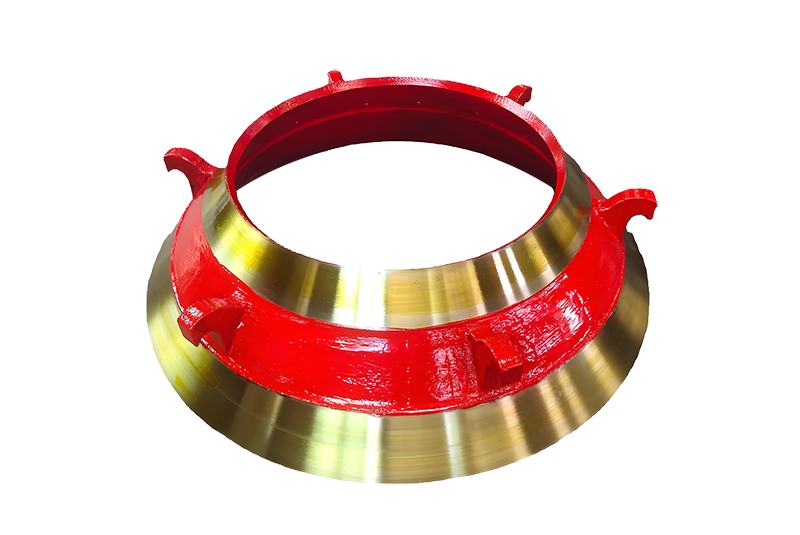
When selecting cone crusher liners, several critical factors must be considered to ensure optimal performance. These factors will directly affect the efficiency, longevity, and cost-effectiveness of the equipment.
Hardness and abrasiveness:
The hardness of the material is an important factor affecting the selection of the liner. Materials with higher hardness (such as granite and quartz) will aggravate the wear of the liner, so it is necessary to select materials with strong wear resistance (such as high manganese steel liner or high chromium cast iron liner). Highly abrasive materials also require the liner to have high wear resistance to avoid premature damage.
Viscosity and humidity:
Materials with high humidity or high viscosity may cause material accumulation and block the crushing chamber, affecting crushing efficiency. For these materials, choosing a liner design with a smooth surface and easy cleaning (such as a forged liner) can reduce material adhesion and improve material fluidity.
Temperature and humidity:
Extreme working environments (such as high temperature or humid environments) will have different degrees of impact on liner materials. In high temperature environments, some liner materials (such as alloy steel liner) have better high temperature resistance; in humid environments, the liner may face corrosion, so it is necessary to select liner materials with strong corrosion resistance.
Impact and load:
In a working environment with strong impact and high load, the liner needs to have high impact toughness and wear resistance. For example, forged liners are more suitable for such conditions because of their higher density and strong impact resistance.
Output and particle size requirements:
The output productivity and product particle size distribution determine the selection of liners. If a finer particle size distribution is required, a specially designed custom crusher liner may be required to ensure crushing efficiency and consistency of product particle size. In addition, high-output crushing conditions require liners with a long service life and reduced replacement frequency.
Material feed particle size:
Larger particle size feeds will cause greater impact on the liner, requiring the liner to have strong impact resistance and wear resistance. In the case of large feed particle size, liners that can withstand greater impact and pressure, such as forged liners, should be selected.
Material distribution:
If the material particle size distribution is relatively uniform, conventional liners can be selected; if the material particle size is uneven or prone to produce too much fine material, it is necessary to select optimized liners to ensure crushing effect and equipment stability.
Operating speed and load fluctuation:
The selection of liners should take into account the operating speed and load fluctuation of the crusher. Under high load and high speed conditions, the liner needs to have good toughness and wear resistance to withstand irregular impact loads.
Temperature fluctuations and operating environment:
Temperature fluctuations during operation can also affect the use of the liner, especially in high temperature and high load environments. Choosing materials that can operate stably at various temperatures can extend the service life of the liner.
Initial cost:
The cost of liners of different materials and designs varies greatly. Generally, liners with good wear resistance (such as high chromium cast iron or ceramic liners) are more expensive. When selecting liners, it is necessary to select the appropriate material based on the actual budget to ensure the best performance within the budget.
Operating cost:
Although liners with higher initial investment may cost more, their longer service life and less maintenance costs can bring lower operating costs. Therefore, from the perspective of long-term operation, it may be more economical to choose liners with superior performance but higher initial cost.
Supplier's production capacity and delivery cycle:
There are many liner suppliers on the market, but not all suppliers can provide high-quality liners that meet the requirements on time. Choosing a reliable supplier can ensure timely supply and stable quality.
After-sales service and support:
When choosing a liner, after-sales service is also an important consideration. A reliable supplier can provide timely technical support, spare parts supply, and liner replacement recommendations to ensure long-term and efficient operation of the equipment.
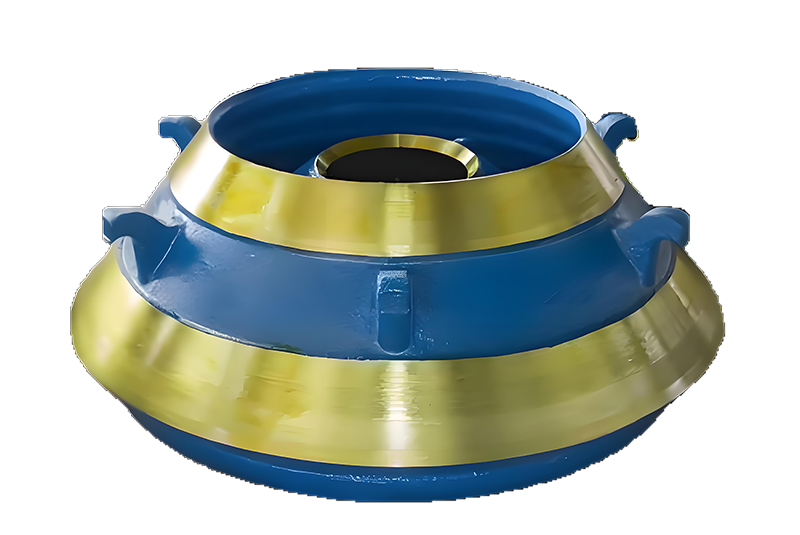
Understanding wear patterns is crucial for efficient cone crusher operation. Over time, liners wear down as a result of constant impact, abrasion, and crushing forces. Different wear patterns can indicate potential issues with the crusher’s operation or liner selection.
Uniform Wear:
Ideally, the wear should be uniform across the liner surface. If the wear is even, it indicates that the crusher is operating correctly, and the liner is suited for the material being processed.
Uneven Wear:
Uneven wear can indicate issues with feed distribution, crusher settings, or material hardness. If one area of the liner wears more than others, it can lead to inefficiency, lower throughput, and more frequent liner replacements.
Excessive Wear at the Bottom:
Excessive wear near the bottom of the liner can indicate that the crusher is being overfed or the material is not being distributed evenly within the chamber.
By monitoring wear patterns, operators can anticipate when liners need to be replaced and make adjustments to improve efficiency and prevent costly failures.
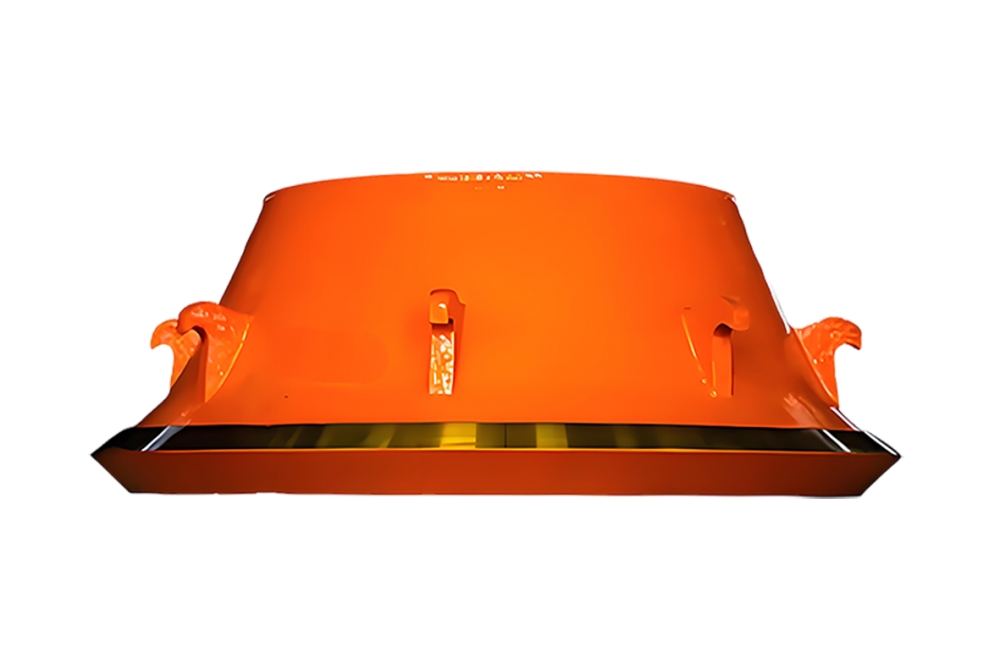
Proper maintenance and timely replacement of cone crusher liners are essential to ensuring the longevity and efficiency of the equipment.
Regular Inspections:
Frequent inspections can help identify signs of wear early, preventing sudden liner failure and minimizing downtime.
Monitoring Wear:
Many crushers now come equipped with sensors or wear monitoring systems that track the condition of the liners in real-time. These systems provide valuable insights into when the liners should be replaced.
Proper Liner Replacement:
When replacing liners, it is essential to ensure proper installation to prevent misalignment or improper wear, which can affect crusher performance.
By adhering to a proactive maintenance strategy, businesses can minimize unplanned downtime and maximize equipment efficiency.
Selecting the right cone crusher liner is not without its challenges. Some of the most common issues include:
Material Compatibility:
Incorrect material selection for the crusher’s application can lead to rapid liner wear or premature failure.
Incorrect Feed Size:
If the feed size is too large or inconsistent, it can cause uneven wear and damage to the liners.
Operating Conditions:
Harsh or extreme operating conditions can accelerate liner wear and reduce their lifespan.
Addressing these challenges requires careful consideration of the crushing environment and regular adjustments to crusher settings.
As industries continue to demand more efficient and durable equipment, the technology behind cone crusher liners is evolving. Some emerging trends include:
Advanced Materials:
The development of new, more durable materials like composite alloys and ceramic-based liners offers the potential for longer liner life and reduced maintenance costs.
Smart Liners:
Some cone crushers are now being equipped with smart sensors that monitor liner wear and send real-time data to operators. These systems can help optimize maintenance schedules and improve performance.
Sustainability:
With growing concerns over sustainability, manufacturers are focusing on creating more eco-friendly liner materials and improving the recycling processes for worn-out liners.
As a professional crusher liner manufacturer, Haitian is committed to providing excellent mechanical wear-resistant accessories for the construction, mining, metallurgy and other industries. With years of R&D experience and advanced production technology, Haitian's cone crusher liner has excellent wear resistance and impact resistance, which can effectively extend the service life of the equipment, reduce maintenance costs and improve production efficiency. Whether it is the crushing of high-hardness materials or applications in extreme working environments, Haitian's liner can provide you with an ideal solution. Choose Haitian to improve your productivity and reduce operating costs!
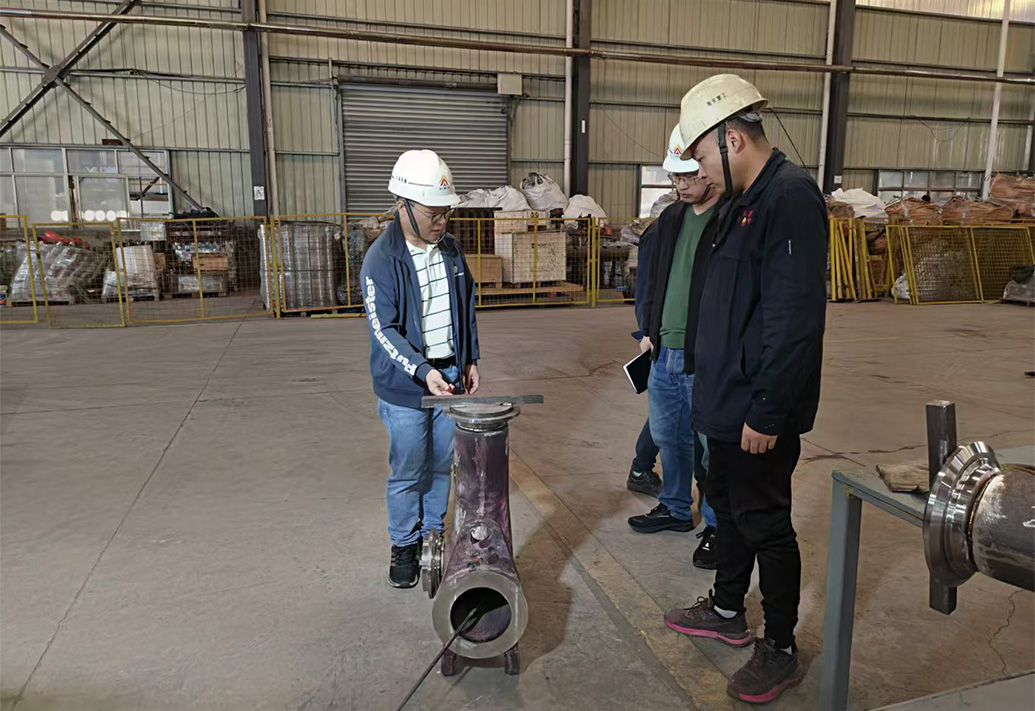
Choosing the right cone crusher liner is critical to maximizing equipment performance, minimizing downtime and reducing operating costs. By understanding the different types of liners, considering factors such as material properties and operating conditions, and maintaining a proactive maintenance plan, companies can ensure their crushers operate efficiently. As technology advances, the future of liner selection has greater potential in terms of performance optimization, longer service life and more sustainable practices. Finally, choosing a reliable cone crusher liner supplier is key to ensuring the normal operation of equipment, improving production efficiency and reducing costs. As a professional crusher wear-resistant liner supplier, Haitian can meet your needs and provide reliable products and quality services.
Consult us now to learn more about product details and customized solutions.